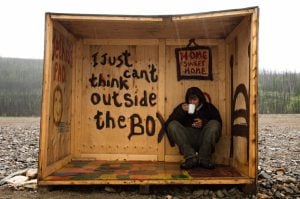
Travel
The spell of the Yukon
An insider’s account of the modern-day gold rush
- 4210 words
- 17 minutes
History
Winning gold 100 years ago in Antwerp, Belgium, Canada’s team set a standard for Olympic hockey dominance that would last for three more successive Games

The King of the Belgians hoped Antwerp’s shell-pocked roads would be repaired in time for the summer Games of the VII Olympiad. In place of an athlete or a Greek god, the statue at the stadium when the main event launched in July 1920 depicted a Belgian infantry soldier hurling a grenade. In a city that had been under siege in 1914, then occupied by German troops through to the Armistice in 1918, it’s no surprise that the First World War shadowed every aspect of the 1920 Olympics.
For Canada, the Games got underway prior to the opening ceremony, in April, with the first-ever hockey tournament in Olympic history held at Antwerp’s Palais de Glace. Winning gold 100 years ago, Canada’s team set a standard for Olympic hockey dominance that would last for three more successive Games.
Wearing the maple leaf that year were the Winnipeg Falcons, who had earned their way to the Olympics as national senior amateur champions, having defeated the University of Toronto for the Allan Cup in March. Rooted in Manitoba’s Icelandic community, the Falcons had been a fixture of Winnipeg’s hockey landscape for more than a decade. In the spring of 1916, the roster had enlisted, almost to a man, with the Canadian Expeditionary Force to serve in the infantry on the Western Front or, as in the case of 1920 team captain and future NHL star forward Frank Fredrickson, to take to the skies with the Royal Flying Corps. Another NHLer-to-be, defender Bobby Benson, had been shot in the knee on his previous visit to Europe, when he was in the fight in northern France.
The weather had been fair for their nine-day crossing to Liverpool aboard Canadian Pacific’s S.S. Melita. Frank Fredrickson managed to cut his head falling out of his bunk on the ship, but he still went on to lead the team in scoring at the Games. The team took light training on the deck — jogging and calisthenics — and entertained their fellow passengers with “musical entertainments.”
Along with the hosts, the other teams that gathered in Belgium came from France, Switzerland, Czechoslovakia, the United States and Sweden. The skilled U.S. squad was Canada’s main challenger. Most of the Swedes, meanwhile, were bandy players (a game where skaters use sticks to direct a ball into a net) who had never seen a competitive hockey game, let alone played in one.
The Palais de Glace in downtown Antwerp was demolished in 2016, but in 1920 it featured a full and energetic orchestra, with room for some 1,500 spectators, many of them accommodated rinkside at café tables. “Spectators dined and drank as they watched the various nations play hockey,” wrote W.A. Hewitt, who accompanied the Falcons and reported on the proceedings for several Canadian newspapers. The nets were unconventional — “like a folded gate” — and the rink was narrower than what the Canadians were used to. Still, Hewitt wrote, “The Canadians declare the ice in excellent shape.”
Olympic hockey that year was seven-aside, no substitutes permitted, and played out over two 20-minute periods rather than three. Under the tournament’s knock-out format, Canada’s road to gold lasted just three games. Having swamped Czechoslovakia 15-0, they took on the talented Americans next. Soldiers from the local British garrison cheered on the Canadians, while U.S. occupation troops backed their team as the Canadians prevailed 2-0. The next day, they wrapped up the championship by overwhelming the plucky Swedes, 12-1. That lone goal against was big news: Canadian goaltender Wally Byron was so shocked to see a puck pass him that he fell to the ice.
After a sombre week spent touring Belgium’s battlefields, the Canadians returned home, docking on the East Coast in mid-May. Fêted in Montreal and Toronto, the Falcons were welcomed home to Winnipeg with a parade, a banquet and gifts of gold watches. “On the ice as on the battlefield,” a proud editorial asserted, “Canada gets what she goes after.”
Are you passionate about Canadian geography?
You can support Canadian Geographic in 3 ways:

Travel
An insider’s account of the modern-day gold rush

Travel
The trail started with a vision to link Canada coast to coast to coast. Now fully connected, it’s charting an ambitious course for the future.

Science & Tech
Celebrating Canadian Innovation Week 2023 by spotlighting the people and organizations designing a better future

Wildlife
Canada jays thrive in the cold. The life’s work of one biologist gives us clues as to how they’ll fare in a hotter world.